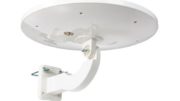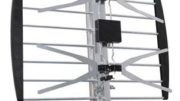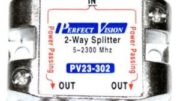If you’ve been watching cable or satellite, you may not even be aware of subchannels. Some people think it’s the best part about the transition to digital TV that took place back in the 2000s, while others think they are a waste of time and space. What do you think?
The history of subchannels
When the government mandated the switch to digital TV over ten years ago, broadcasters were given a choice. They could broadcast one full-quality signal using the 19.2 megabit-per-second connection afforded by their broadcast channel, or they could split the channel into multiple signals. As long as all the signals obeyed FCC rules (like, for example avoiding profanity) the broadcaster was free to use their channel any way they wished.
Almost immediately, three camps formed. One group believed that the only important thing was a full-strength, full-quality HD signal. The other group believed that there was not only a benefit to the community but a profit to be made. The third group, made up mostly of religious and educational broadcasters, saw the possibility of multiplying their content without buying additional licenses: where one channel once stood they could have five, six, even seven channels.
How do you know if you’re watching a subchannel?
Subchannels are identified with a decimal point when surfing through the channel list. The primary channel (what was once “channel 2”) is known with the decimal 1 (example: 2.1) while other channels are designated 2.2, 2.3, 2.4, and on and on.
Cable and satellite companies usually don’t carry subchannels, because their technology means that a whole cable or satellite channel would be needed. These subchannels would need to be “unbundled” from the main channel.
On the other hand, an antenna enthusiast will find those subchannels easily, and will quickly realize that instead of just 5 or 6 channels he has 50, 60, or even 100 channels of content all available over the air for free.
What’s on a subchannel?
Subchannel content can be anything. There aretations looking to make money have struck gold with pre-1980 television programs. That sort of stuff would never pay for itself on a major channel. It’s cheap and easy to come by, sometimes free of copyright, and has a built-in market for Generation X, Baby Boomers, and even folks older than that who haven’t embraced online viewing. Networks like ThisTV, MeTV, and Cozi all specialize in comfort-food TV for the over-40 set.
For religious and foreign-language programmers, you’ll often find 4,5, or more subchannels filled with programs that serve their communities. You’ll also find raw news feeds, educational programming, and shopping channels.
Subchannels are almost always standard-definition. Sometimes the quality level is really low, depending on what’s on them. While you sometimes see new programs on subchannels, they are a great match for older programs. They’re also really good for people who use older TVs.
Sounds good, what’s the problem?
What’s so wrong with a subchannel? In order to provide subchannels, some of that precious bandwidth must be taken away from the primary channels. CBS affiliates very rarely have subchannels, preferring instead to give the best possible signal for sports and other programming.
Cable and satellite companies rarely carry subchannels. That makes some people think they’re a waste of space that could be used for a better quality picture. Some of these people think that no one watches subchannels so why bother?
If you have even the tiniest interest in subchannels, why not pick up an antenna at Solid Signal that’s appropriate for your market and see what all the fuss is about? Might just be worth your time to quadruple the number of local channels you get.





